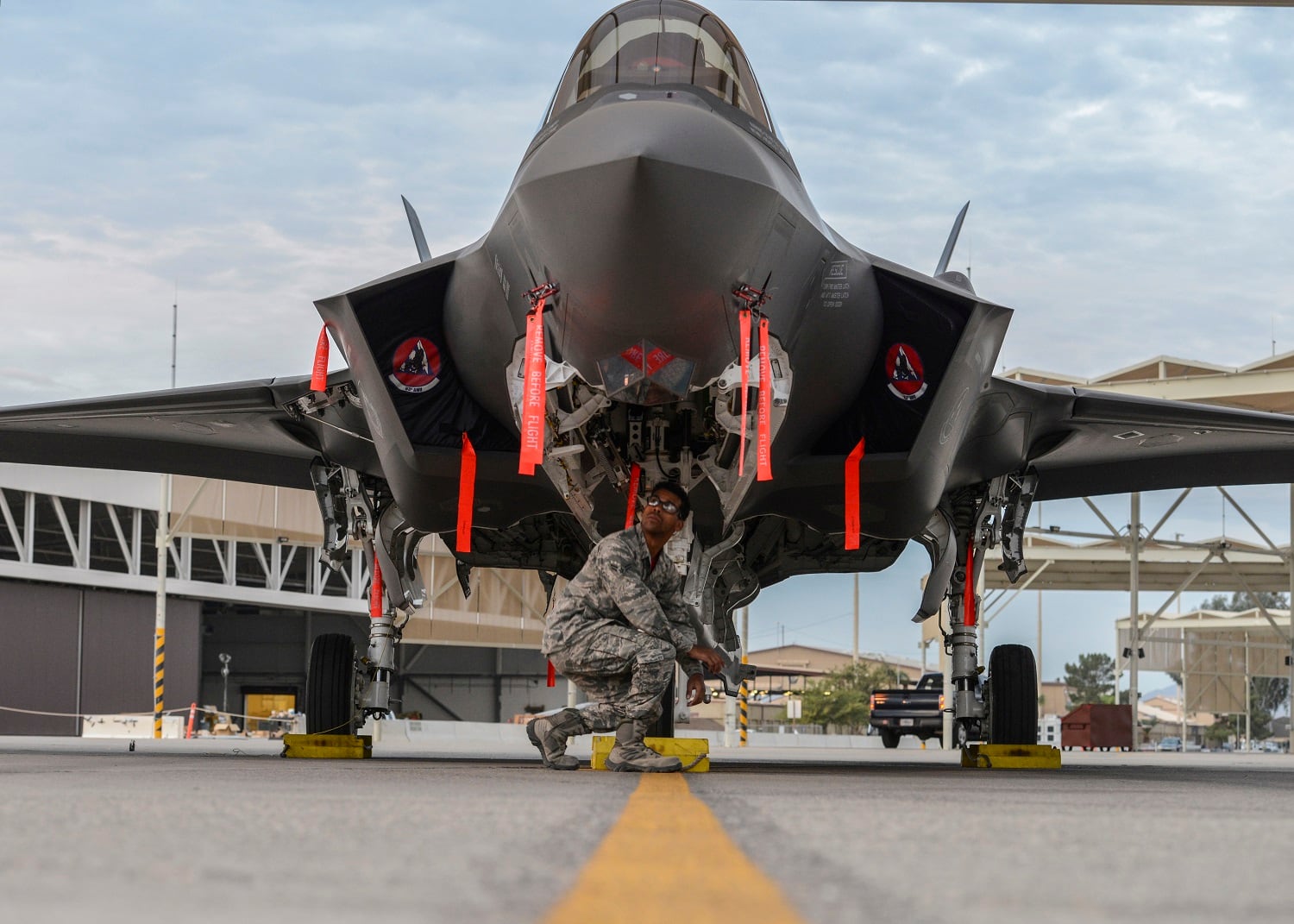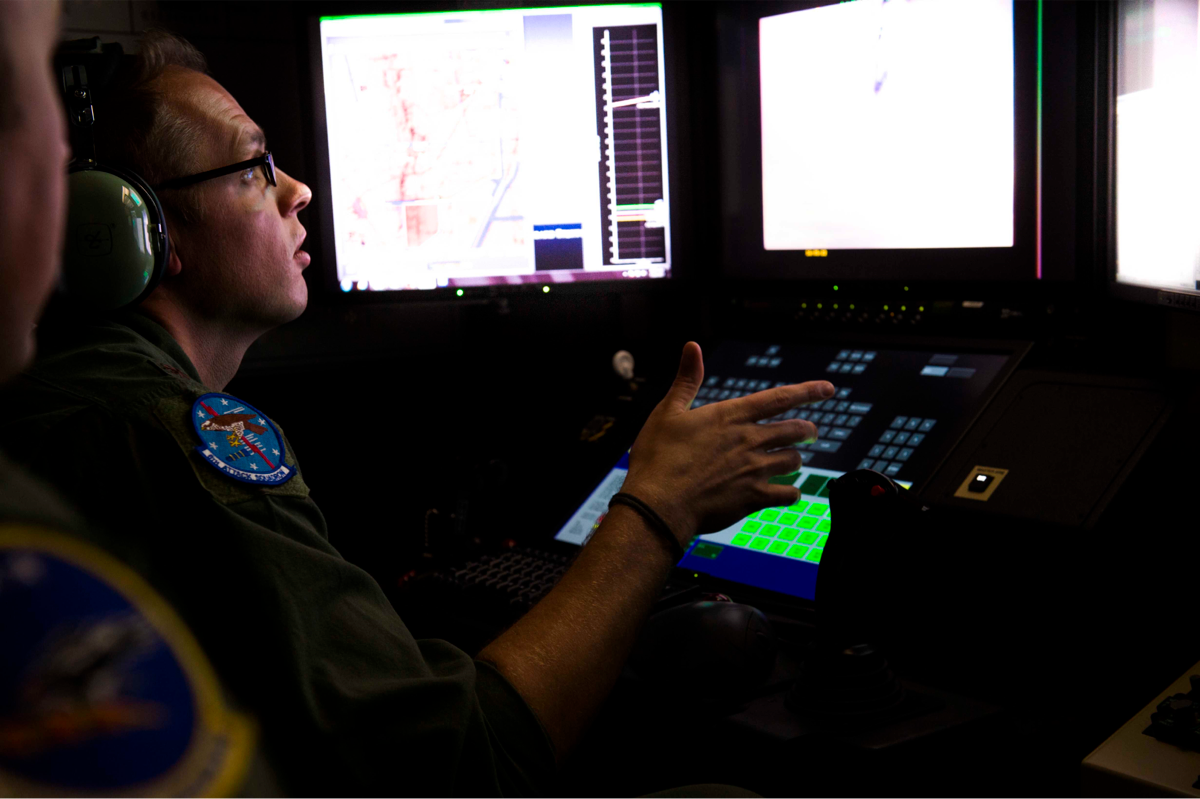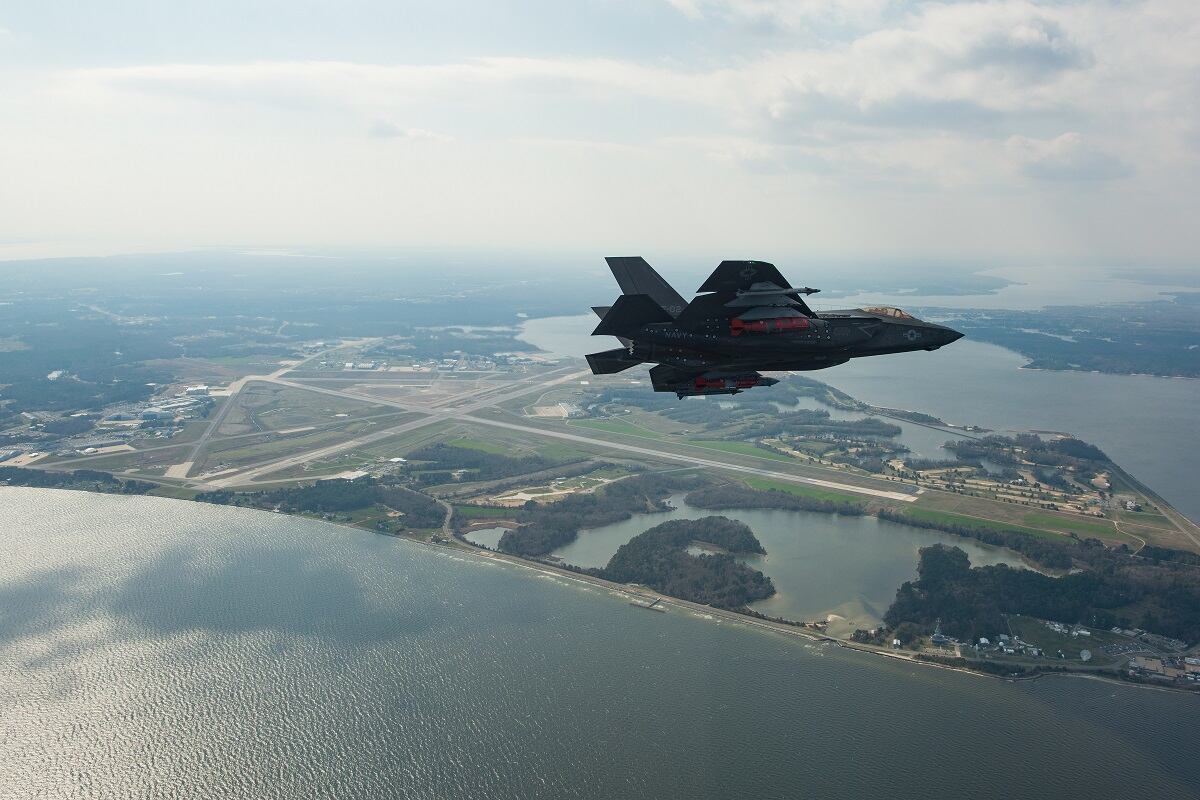FARNBOROUGH, England — Will Roper took the job of assistant secretary of the U.S. Air Force for acquisition, technology and logistics in February, but he’s likely better known for his prior gig as head of the Pentagon’s Strategic Capabilities Office.
As the first-ever director of the new SCO, Roper drew attention for projects that used off-the-shelf tech to prototype new capabilities like swarming drones.
Now he’s turning his eye toward making sure the Air Force quickens the pace in which it acquires new weapons, focusing especially on prototyping as a method to push the service toward a solution on a faster timeline, he told Defense News in a July 16 interview at Farnborough Airshow.
What current programs involve prototyping?
We’ve got a whole set of programs that we’re accelerating, and what I love about our acceleration is that there’s no rhyme or reason to what type of program they are. Some of them are sustainment programs like putting a new engine on the B-52. Others are more traditional prototype efforts like hypersonics where we’re doing an advanced weapon acceleration. Others are software, where we’re accelerating F-22 software drops, our protected [satellite communications] delivery.
The good news about this is it doesn’t appear that there is [only] one type of program that’s able to be accelerated. The difference is that we’re not using traditional [Department of Defense] 5000 [acquisition principles]. Instead we’re using the new authorities from Congress, and all they encourage us to do is to tailor the way that we acquire the system to the specific needs of what we’re buying.
And that sounds completely obvious. You ought to do something specific to the needs of what you’re buying. But if you look at the 5000 process, which is traditional acquisition, it has more of a generic approach. And in that generic approach, there are a lot of steps that don’t make sense for all systems. So we’re just cutting those out, and that’s where the acceleration is coming in.
How are you prototyping new B-52 engines? Aren’t there off-the-shelf systems already available?
There are. That’s what we want to use. The question is: How do you go out and do that acquisition? If you do it a traditional way, you’ll spend years doing studies, [with] the government pretending it knows enough about those commercial engines to make a decision to pick one and go field it. If we were a company, we would know that we don’t know enough about those engines without getting our hands dirty, without getting some grease on our hands and sleeves.
So they would go out. They would downselect to a top set of vendors, have each one create a digital twin of their engine, do the digital representation of its integration on their aircraft, fly them off against each other, determine which one will give you the most fuel savings and then pick the engine based on the one that saves you the most money overall.
RELATED

So, a simulated flyoff?
Exactly. So in the accelerated acquisition paradigm, which uses the 804 authority, we don’t have to go the 5000 route of doing years of study. We can do it like a commercial company. And what I love about this example is that it’s not just faster, it’s about three-and-a-half to four years faster in total time. It’s also better because we’ll be making the decision with a lot more data than we would if we were staring at a wad of paper that was analysis but not actual simulation.
This is an example of what tailoring means and what it gets you. This approach may not apply to other programs, but it makes a ton of sense for this one. So that’s what we’re developing right now, is buying a commercial engine the way a company would. Buying and integrating it the way a company would, not a military.
What’s the schedule?
We’re working the acquisition plan right now. I’ve approved it for one of our 804 accelerations, so we’ll use the new authorities. I’ve given this guidance to the program office. Let’s go do a digital twin flyoff the way that industry would, and I’m just letting them work the details before we approve and get started. But it’s a great example; a digital twin flyoff is pretty cool. You wouldn’t think putting a new engine on the B-52 would be a cool program. You would expect the hypersonics program would be where all the cool kids would go. But in my view, there’s a lot of great engineering and great acquisition to be done in all programs, and what’s been awesome about being in this job is I’m seeing innovation across the Air Force, not just in the high-tech programs you’d expect.
The light-attack experiment is obviously one example where you’re doing this prototyping and experimentation. Some in Congress want to give you money in fiscal 2019 to buy planes, but the Air Force hasn’t even figured out whether to turn this into a program of record. Do you have the contractual authorities to make that happen?
I think we can do it using new authorities that Congress gave us in the last National Defense Authorization Act. Light attack is a great example of being able to move into an authority called “middle-tier rapid procurement fielding.” The requirement is that it’s something that you need to be able to buy off the shelf with only a little upfront development in six months total. And light attack is a great example of doing experiments to make sure that you understand the ability of existing planes to do a mission we need to do, and then moving into an acquisition decision which is based on buying a currently available product.
I’m confident as we go through all of the light experiment data — we’re doing that right now — that any of the options we look at, I’m confident none of them will be 100 percent perfect, but that’s exactly what’s wrong with acquisition today. We pursue 100 percent solutions until we get them. Light attack is a great example of realizing that we can get 90 to 95 percent today at a lower cost, and since we’ve gone out and flown before we bought, I think we have a much better chance of doing this acquisition with confidence, that what we give the operators will do the mission and be sufficient.
RELATED

You mentioned hypersonics as another area that involves prototyping. Can you say more about that?
Hypersonics is an area that I’m very passionate about. I feel like we need to not fall behind any country in this domain. And it was an area, coming in from SCO, I really wanted to dive into these prototyping efforts and see is there anything that we can do to speed them up.
And in fact, there is. This is another example of another program where the rapid authorities appear to make a big difference on how quickly you can go. But the big difference is really shifting the program so that it embraces the potential for failure. You saw this a lot from me at my last job. Failure is very much an option, and as a matter of fact, if we’re going to fail and we do it early in a program, we’ve probably learned something valuable that we need to understand before progressing.
Hypersonics is a program where I would expect us to get out and learn a lot as we test. So rather than taking time to ensure that your tests are checking the box of something you’re confident you can do, you compress the schedule to go out and make the test focused on learning something.
Just that difference in mindset takes years out of our hypersonics program. We’re hoping to [get to initial operational capability] within three to four years, and all of that is due to doing it as an experimental test program vice a long compliance period.
Are you speaking of the hypersonic weapons program that Lockheed Martin recently won?
We just awarded a contract to Lockheed, and that will be the vehicle that we use to fund this.
Are you relying on digital prototyping or physical demonstrators?
It will be all [of them]. Hypersonics is a new regime for weaponry, so we very much want to have digital models that we believe. So getting in the wind tunnel so that we can go out and simulate flights before we do them.
But because this is a pretty exotic domain of physics in terms of pressures and temperatures, we’re going to need to get out and fly and test [real prototypes]. [Information technology is] very important that we’re instrumenting our flight bodies so that we’re collecting data. There’s nothing that I’m telling you that’s peculiar to this program — this is pretty common for any envelope-pushing program.
I think the big difference in hypersonics now versus a couple of years ago is just shifting to a test focus and embracing the potential for failure as a spectacular learning event or whatever word you want to use as a good name for failure. It’s a great failure of our English language that there’s no word that means “good failure.” We say we need to embrace failure. We don’t often do it because it still comes with a stigma, and that’s one of the things I’m really hoping to do in this job. I’m looking for those people to take smart risks, to go out to be daring, and my job is going to be to give them top cover, applaud them and reward them when they do because we’re going to need that across the Air Force if we’re going to speed up.
RELATED

Can you give me a status update on T-X?
On T-X, we’re going through source selection, so we’re hopeful we’ll get through that — should be in the fall.
The fall? We had been hearing summer.
I guess, if September is summer — I guess September is technically summer. End of summer is still fair based on where we are now.
With JSTARS, I understand the Air Force is still doing source selection as Congress figures out the path forward. Will it be ready to announce in short order if you are forced to move forward on the program?
We’re hoping that we can shift to the new [advanced battle management system] ABMS program because if we’re going to deal with a contested environment, we are going to have to learn to take things that used to be integrated, complicated system that are high-value targets, and break them up into less contestable targets that can work together. I don’t view that as particular to JSTARS; it’s something we need to learn how to do writ large.
I view it as an architecture challenge that the Air Force has to pick up if we’re going to learn how to do distributed systems. I would like to be able to do it for JSTARS because I think it’s a great candidate. If Congress does require us to do the recap, we’re making sure that we have not dropped the ball on doing that. But we are hoping to be able to shift to the future concept. As an SCO director and former program manager, I would love to manage that program. I think there will be a lot of things to learn and tryn and it definitely needs to be a program where we embrace failure up front and prototype because there’s going to be a lot of learning to do about how do you make things work together as a team. We get a sense of how commercial industry is solving it, and I imagine we can use a lot of their lessons learned, but probably not all of them.
RELATED

It sounds like the ABMS architecture is still being worked through as far as what will fit in that and how.
I’d say it’s an architecture at this point. And that’s unusual for a program when, if you were in my job, you’re getting tasked like, “I need a new airplane, I need a new sensor pod,” and you get a list of how well it has to perform. ABMS is more [like], you’re given a mission and your can choose how to allocate the requirements for that mission across a system of systems.
So it’s not the mission requirements — you’re doing the design requirements. And you can just imagine one designer saying: “I’m going to collect a lot of data from nose to the edge. I’m going to do a massive amount of processing at the middle.” I bet you’d get high performance that way, but you’d have huge communication challenges.
Another designer might say: “I’m going to put my processing on the edges themselves, so I’m not dependent on getting to that central node.” You probably have more graceful degradation if you have one of those nodes taken out. But you might give up performance.
This is a real architecture problem, and acquisition historically does not do architecture. When we need to build something, we don’t allocate it across systems of systems. In the future, it looks like we’re going to have to start doing that.
Valerie Insinna is Defense News' air warfare reporter. She previously worked the Navy/congressional beats for Defense Daily, which followed almost three years as a staff writer for National Defense Magazine. Prior to that, she worked as an editorial assistant for the Tokyo Shimbun’s Washington bureau.







